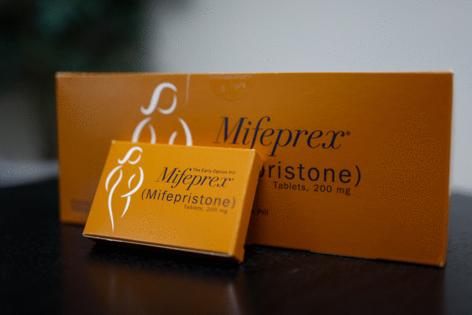Noah Feldman: Supreme Court scoffs at flimsy abortion pill argument
Published in Op Eds
Abortion is back at the Supreme Court. The case contests decisions by the Food and Drug Administration to make the drug mifepristone available by mail and via telemedicine. But at oral argument on Monday, the court that overturned Roe v. Wade seemed poised to reject the arguments of the pro-life Alliance for Hippocratic Medicine.
No, the conservative justices haven’t suddenly discovered a new sympathy for the right to choose. Rather, several of the conservatives, alongside the court’s three liberals, appeared to believe that the doctors represented by the Alliance lacked legal standing to challenge the FDA’s decisions because they aren’t concretely harmed by the availability of mifepristone.
The basic idea is that the court shouldn’t decide hypothetical issues but only real cases where real people can show that they are really harmed. For a federal court to weigh in, there must be an actual “case or controversy,” in the language of Article III of the Constitution. Over the years, the Supreme Court has elaborated standing doctrine to require that an injury be concrete, factual and not excessively speculative.
An important case about what counts as concrete and factual is Clapper v. Amnesty International. In the Clapper decision, the court rejected a challenge to the Foreign Intelligence Surveillance Act brought by advocates and attorneys who argued the government was likely to intercept their overseas communications.
In the ruling, the court held that the chain of causation asserted by the plaintiffs was too speculative. It depended on the assumption that the government would target people with whom the plaintiffs communicated; that the government would seek and receive a surveillance warrant; that the government would actually succeed in intercepting the communications; and that the plaintiffs would be part of those communications. That might sound plausible in 2024, but the ruling was issued in 2013, months before Edward Snowden revealed the existence of government programs collecting massive amounts of metadata on US citizens.
The chain of causation in the mifepristone case is far more speculative and attenuated. According to the doctors, their concrete injury is that someone might take mifepristone, might experience medical complications, might go to the hospital for care, and then the physicians in question might have to complete the abortion despite their moral objections to doing so.
The odds that this chain of causes and effects might actually come to pass — and affect the specific physicians in the case — boggles the mind. To start with, medication abortion using mifepristone is successful 99.6% of the time; just 0.4% of patients face a significant complication. If the Clapper injury was too speculative, the mifepristone “injury” certainly doesn’t satisfy constitutional standing.
What’s more, as Solicitor General Elizabeth Prelogar pointed out, federal law already says that no physician can be compelled to perform an abortion — or any other procedure — against their conscience. Hence, the doctors’ hypothetical supposition literally cannot occur under existing law. That’s a further reason for the court to reject standing.
Ironically, it was Justice Samuel Alito, who wrote the Clapper decision, who was most concerned during oral argument to devise some way to find a concrete injury to the doctors in this case. He repeatedly asked the solicitor general if anyone would have the authority to challenge the FDA’s decision to make mifepristone more easily available. His strong implication was that someone must have standing to do so.
But it’s the FDA’s job to decide whether drugs are safe and how they can be administered. If it approves a drug for use as safe, no one is required to prescribe it or take it, and so no one has standing to challenge the FDA’s judgment. (Of course, if the drug harms people, they can then sue the manufacturer for product liability.)
Justice Elena Kagan emphasized how unusual this case is by pointing out that when the US Court of Appeals for the Fifth Circuit overturned part of the FDA’s rules, it was the first time in history that “any court has restricted access to an FDA-approved drug by second-guessing FDA’s expert judgment about the conditions required to assure that drug’s safe use.”
All the court’s non-Alito conservative justices appeared open to the conclusion that the plaintiffs lacked standing. Even Justice Clarence Thomas, who often votes with Alito, seemed unsympathetic to a separate standing argument, namely that the organization that brought the case on behalf of the doctors incurred concrete injury because of the cost of bringing the litigation.
If the flow of the oral argument is reflected in the final decision, the justices are going to duck the merits of the mifepristone case and allow the FDA’s rules to stay in place. That’s a far cry from repairing the damage done by overturning Roe. And it still leaves open the complex legal question of what happens when a state bans the sale or importation of mifepristone despite the FDA’s authorization. But at least in this instance, the justices would be allowing the continuing use of mifepristone by telehealth and mail — a protection, however weak, of abortion rights.
____
This column does not necessarily reflect the opinion of the editorial board or Bloomberg LP and its owners.
Noah Feldman is a Bloomberg Opinion columnist. A professor of law at Harvard University, he is author, most recently, of “To Be a Jew Today: A New Guide to God, Israel, and the Jewish People."
©2024 Bloomberg L.P. Visit bloomberg.com/opinion. Distributed by Tribune Content Agency, LLC.







Comments